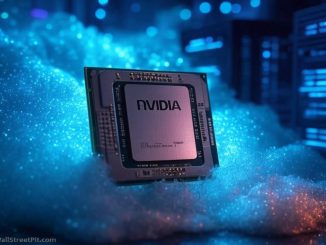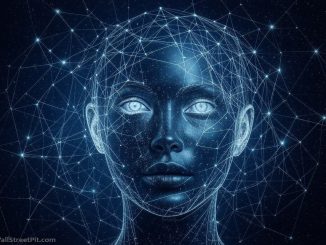NVIDIA’s Senior Research Manager and Lead of Embodied AI at the GEAR Lab, Jim Fan, has announced significant advancements in Project GR00T, a groundbreaking initiative aimed at addressing one of robotics’ most challenging issues: data scarcity.
Exciting updates on Project GR00T! We discover a systematic way to scale up robot data, tackling the most painful pain point in robotics. The idea is simple: human collects demonstration on a real robot, and we multiply that data 1000x or more in simulation. Let’s break it down:… pic.twitter.com/8mUqCW8YDX
— Jim Fan (@DrJimFan) July 30, 2024
The innovative approach combines human demonstration, virtual reality, and advanced simulation techniques to exponentially increase the amount of training data available for robotic systems.
This method promises to revolutionize how robots learn and adapt to various tasks and environments.
At the core of Project GR00T’s methodology is a three-step process:
1. Human Demonstration via Apple Vision Pro:
The process begins with human operators using Apple Vision Pro headsets to control humanoid robots in real-time.
This immersive teleoperation allows for precise hand movements to be translated directly to the robot, creating a small but high-quality dataset of human-guided actions.
2. Environmental Multiplication with RoboCasa:
NVIDIA’s RoboCasa, a generative simulation framework, takes the initial demonstrations and multiplies them across hundreds of virtual environments. This step dramatically increases the diversity of scenarios the robot encounters, far beyond what would be possible in a single physical lab setting.
3. Motion Augmentation through MimicGen:
The final stage employs MimicGen, a technique that further expands the dataset by generating numerous new action trajectories based on the original human demonstrations.
This process filters out unsuccessful attempts, resulting in a vast, high-quality dataset of successful motions.
Fan emphasizes the significance of this approach, stating, “This is the way to trade compute for expensive human data by GPU-accelerated simulation.”
He notes that this method overcomes the traditional limitations of teleoperation, which is constrained by physical time and resources.
The potential impact of Project GR00T on the field of robotics is substantial. By enabling the creation of diverse, extensive datasets from limited human input, NVIDIA is paving the way for more robust and adaptable robotic systems. This could accelerate development across various applications, from household assistants to industrial automation.
Fan’s enthusiasm is palpable as he concludes, “Scaling has been so much fun for LLMs, and it’s finally our turn to have fun in robotics!”
This sentiment reflects the excitement in the robotics community about the potential for rapid advancement through data scaling techniques similar to those that have driven recent breakthroughs in language models.
As NVIDIA continues to develop these tools, they aim to democratize access to advanced robotics training methods.
Fan expresses the company’s commitment to “building tools to enable everyone in the ecosystem to scale up with us,” suggesting a future where innovative robotics development becomes more accessible to researchers and developers worldwide.
Project GR00T represents a significant step forward in bridging the gap between the limited data collection capabilities of the physical world and the vast potential of virtual simulations, potentially ushering in a new era of rapid progress in robotics.
- Bulenox: Get 45% to 91% OFF ... Use Discount Code: UNO
- Risk Our Money Not Yours | Get 50% to 90% OFF ... Use Discount Code: MMBVBKSM
Disclaimer: This page contains affiliate links. If you choose to make a purchase after clicking a link, we may receive a commission at no additional cost to you. Thank you for your support!




Leave a Reply